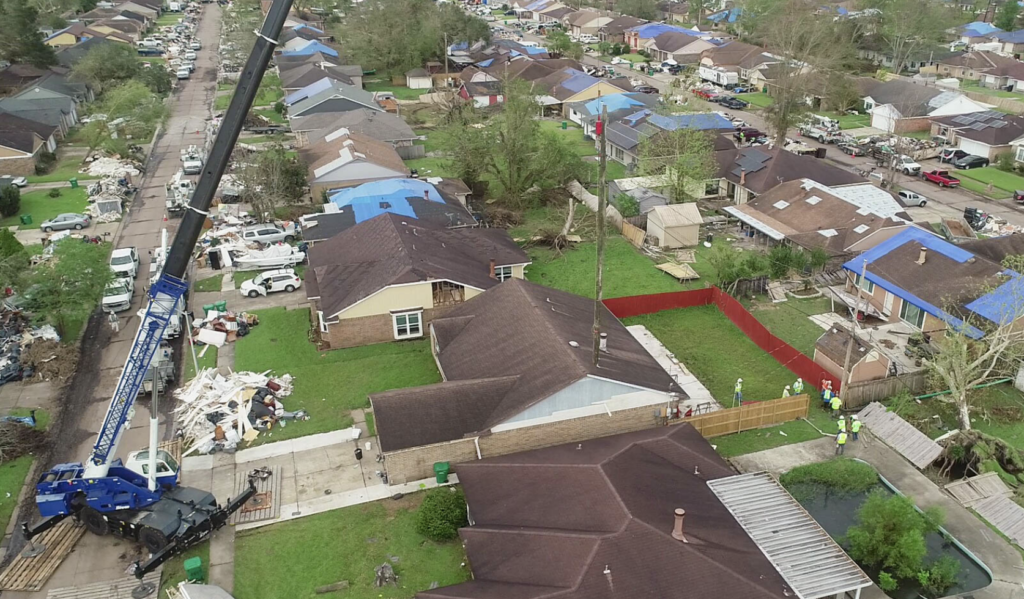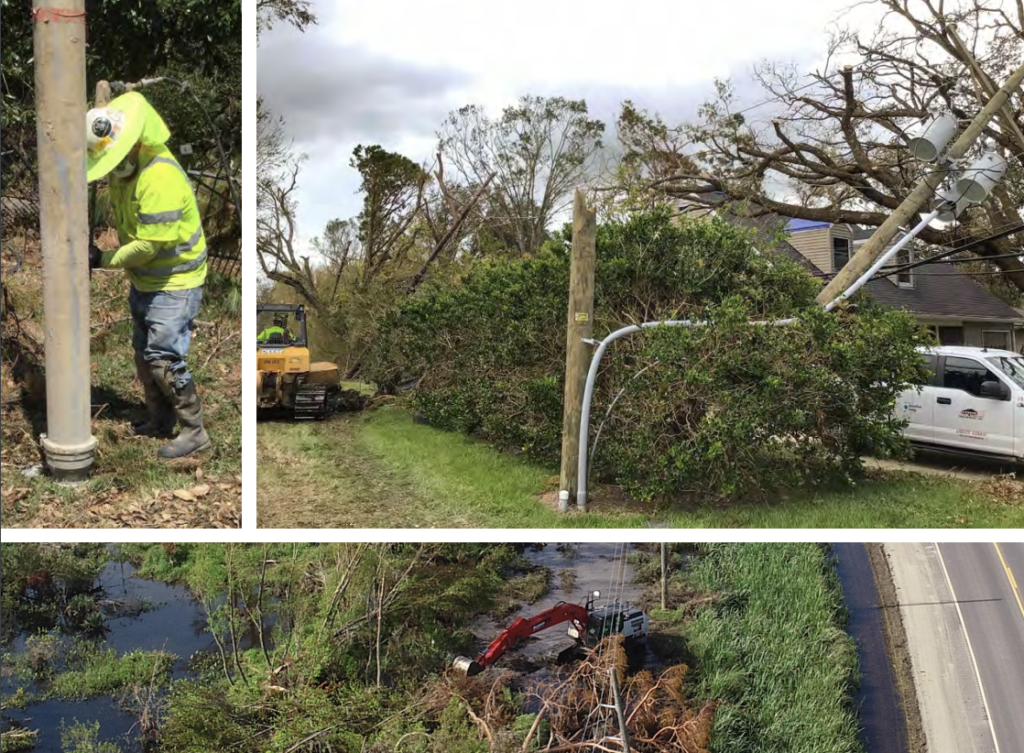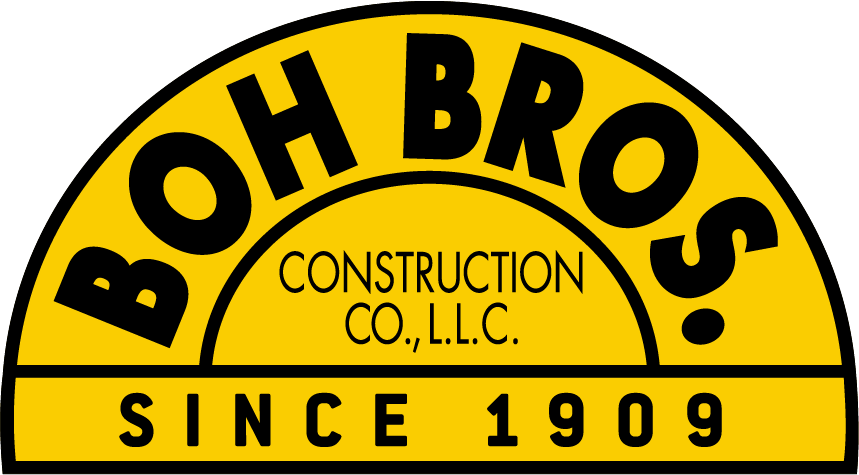It was far from a conventional project. There was no centralized jobsite, no specified deadline, no well-defined scope of work, and it was difficult to predict what each day would bring. The goal, however, was clear: the restoration of power to southeast Louisiana in the wake of Hurricane Ida.
 Through an all-encompassing, “baseload” contract with Entergy, Boh Bros. assisted the energy provider however and wherever there was a need. Brendan Tracy, Boh project manager, says the work came out of a decade-sold maintenance contract that had evolved to include storm repairs after Hurricane Laura in 2020.
Through an all-encompassing, “baseload” contract with Entergy, Boh Bros. assisted the energy provider however and wherever there was a need. Brendan Tracy, Boh project manager, says the work came out of a decade-sold maintenance contract that had evolved to include storm repairs after Hurricane Laura in 2020.
“We asked them to contact us if they needed assistance following a storm and boy did they contact us,” Tracy says. “Entergy would just pick up the phone, call our superintendents Henry Ballam and Dustin Punch and tell them to do X, Y, and Z. That might be hydro-excavating for power poles, setting up laydown yards, backfilling, supplying restrooms, light plants, etc. Anything they needed they would call us, and we would do it for them.”
Before Ida even made landfall, Entergy put Boh and its assigned baseload group on standby. The contractor mobilized by filling sandbags and getting equipment ready in a staging area at its Almonaster facility. But there was only so much they could do in the beginning. “We knew what we would need, but before the hurricane, we had no idea where it would be needed or how much would be needed,” Punch says.
Delegating Control
Ahead of the hurricane, Punch evacuated his family to Birmingham and spent the day with them, then hit the road back to Louisiana after the storm had passed. “I was immediately getting phone calls (from Entergy),” he says. “Once you’re in their system, they treat everyone as a lineman.”
The Boh team initially concentrated its efforts in New Orleans, then began spreading out across every corner of the region. “We had folks in Hammond, Amite, Independence, Fourchon, Golden Meadow, Chalmette, LaPlace, Reserve, etc.,” Ballam says. “We supported our baseload group with everything from hydro-excavating, supplying sand backfill, restrooms, backfills…even ice. If they needed it, we provided it.”
Coordination of such a scatter-shot endeavor was an extraordinary challenge. At peak, there were some 85 Boh workers and 20 crews, making it impossible to manage from a central location. It was a very decentralized, but successful, operation. “Every crew was put together for a certain task, and they were capable of doing that job and making decisions as needed in the field,” Punch says. “Everything was changing by the second.”
Resources were often strained due to severe supply chain disruptions, so the project team leaned heavily upon Randy Ryan in Boh’s truck facility to find the equipment they needed. In turn, Ryan would let the team know where the needed machine was located, then assist them in getting it where it needed to go. “We took everything off of every Boh jobsite that we could,” Punch adds. “There was no time to waste. When Entergy called for something, we had to act quickly. We had to hustle and move and make it happen.”
No Time to Hesitate
Time was of the essence in the aftermath of Ida “and the deadline for every project was ASAP,” Punch says. “Our laborers and support crews would work from 6 am to 6 pm, then from 7 to 10 pm Entergy would run and energize the lines and test everything. They didn’t want anyone out there working in the field or in a bucket working on a powerline when that was going on.” Nevertheless, crews made themselves available until 10:30 pm should a need arise.
Of course, the Boh team also had to deal with the typical challenges found on any job—weather, mechanical problems, unexpected obstacles, etc. When a situation arose, they’d consult with Entergy personnel to work a solution or move onto the next site to keep things moving. “Entergy’s top priority was to get all of the feeders back up and running,” Punch adds. “They were there to support the work and it was our job to execute it in a safe and orderly fashion.”
Throughout the process, existing supplier relationships and Boh’s intimate knowledge of the byways and waterways of southeast Louisiana proved critical. For example, when the supply of rock was threatened after a canal was shut down near Houma, Boh quickly tapped into another source in St. Rose. “You cultivate and maintain good relationships with your suppliers, and they’re there when you need them,” Punch says.
 Punch and Ballam also credit the project’s success to the “all hands on deck” approach by the entire Boh organization. “I’ve worked a lot of hurricanes and this is one of the best responses I’ve encountered,” Punch says. “We had people showing up ready to go to work that didn’t need to be there. I had supervisors two ranks above me working under me. They just showed up and said, ‘Tell me how I can help you.’ It was great.”
Punch and Ballam also credit the project’s success to the “all hands on deck” approach by the entire Boh organization. “I’ve worked a lot of hurricanes and this is one of the best responses I’ve encountered,” Punch says. “We had people showing up ready to go to work that didn’t need to be there. I had supervisors two ranks above me working under me. They just showed up and said, ‘Tell me how I can help you.’ It was great.”
Tracy’s assistance from the main office was equally important, as he would take phone calls and ensure that workers in the field got breaks when necessary. “Apart from our key people, the laborers and foremen were allowed to take a break for a day or two when needed so that they could tend to their own homes and families,” Tracy says.
Safety was an ever-present concern. Therefore, three safety managers frequently visited the sites throughout the duration of the work to ensure a safe work environment. But it’s Boh’s intrinsic culture of safety that gets much of the credit. “Our crews understand what can be done safely and when a task needs to be discussed further in order to maintain safety on site,” Ballam says.


Recent Comments